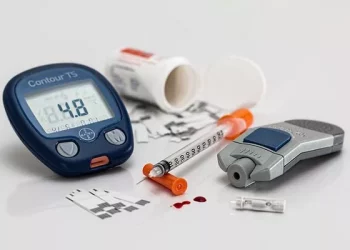The number of Indonesian children diagnosed with type 1 diabetes mellitus (DM1) has risen sharply over the past decade, prompting urgent calls for improved healthcare access and early screening efforts.
According to data from the Indonesian Pediatrician Association (IDAI), the prevalence of type 1 diabetes in children has increased dramatically from 3.88 cases per 100,000 people in 2000 to 28.19 per 100,000 in 2010. By January 2023, this number reached two cases per 100,000, representing a 70-fold increase compared to 2010.
“In Indonesia, type 1 diabetes mellitus in children is primarily caused by insulin deficiency,” explained Dr. dr. Nur Rochmah, Sp.A, Subsp. Endo(K), from IDAI’s Endocrinology Coordination Unit, during a recent seminar on DM1 management in children.
Dr. Nur highlighted that many DM1 cases are only diagnosed after children present in critical condition, often suffering from diabetic ketoacidosis or even coma. This late diagnosis significantly contributes to the rising number of severe cases.
Rising Cases Year by Year
Recent data shows that Indonesia recorded 584 new DM1 cases in children in 2022, with an additional 594 cases in 2023, totaling 1,178. By 2024, another 527 cases were reported, bringing the cumulative number to 1,948 children living with DM1.
Of these cases, 58% are girls and 42% are boys.
Unfortunately, many cases remain undiagnosed or are misdiagnosed. IDAI Chairman, Dr. Piprim Basarah Yanuarso, emphasized that children are often only diagnosed after falling seriously ill. “Many cases are only discovered when the child enters a coma due to ketoacidosis,” he said, stressing the urgent need for widespread screening and early detection.
Understanding Type 1 Diabetes in Children
Dr. Nur explained that type 1 DM occurs when the pancreas can no longer produce insulin or produces it in insufficient amounts. Insulin is essential for allowing glucose to enter the body’s cells to be used as energy. Without it, glucose accumulates in the bloodstream, leading to serious health complications.
“Children with type 1 DM will require lifelong insulin therapy,” said Dr. Nur. The exact cause of DM1 remains unknown, but autoimmune reactions, where the immune system attacks insulin-producing cells, are a suspected trigger.
Common symptoms in children include excessive thirst and hunger, frequent urination, and unexplained weight loss. Despite increased appetite, affected children often lose weight as their bodies cannot properly absorb glucose, resulting in the breakdown of muscle and fat tissue.
“Parents should be vigilant if their child eats and drinks excessively but still loses weight, especially if blood sugar tests show levels above 200 mg/dL,” Dr. Nur warned.
The Call for Comprehensive Action
Improving access to diabetes care services, especially in regional areas, is crucial to managing the increasing number of cases. Dr. Nur called for collaborative efforts between the government, healthcare professionals, communities, and families to combat the rising morbidity and mortality from DM1.
These efforts should include:
-
Public awareness campaigns on diabetes symptoms,
-
Regular blood sugar screenings in schools and communities,
-
Promotion of healthy lifestyle practices among children.
With proper management and early diagnosis, children with type 1 diabetes can lead healthy and fulfilling lives.
Related topics:
What is the New Diet for Type 2 Diabetes
























